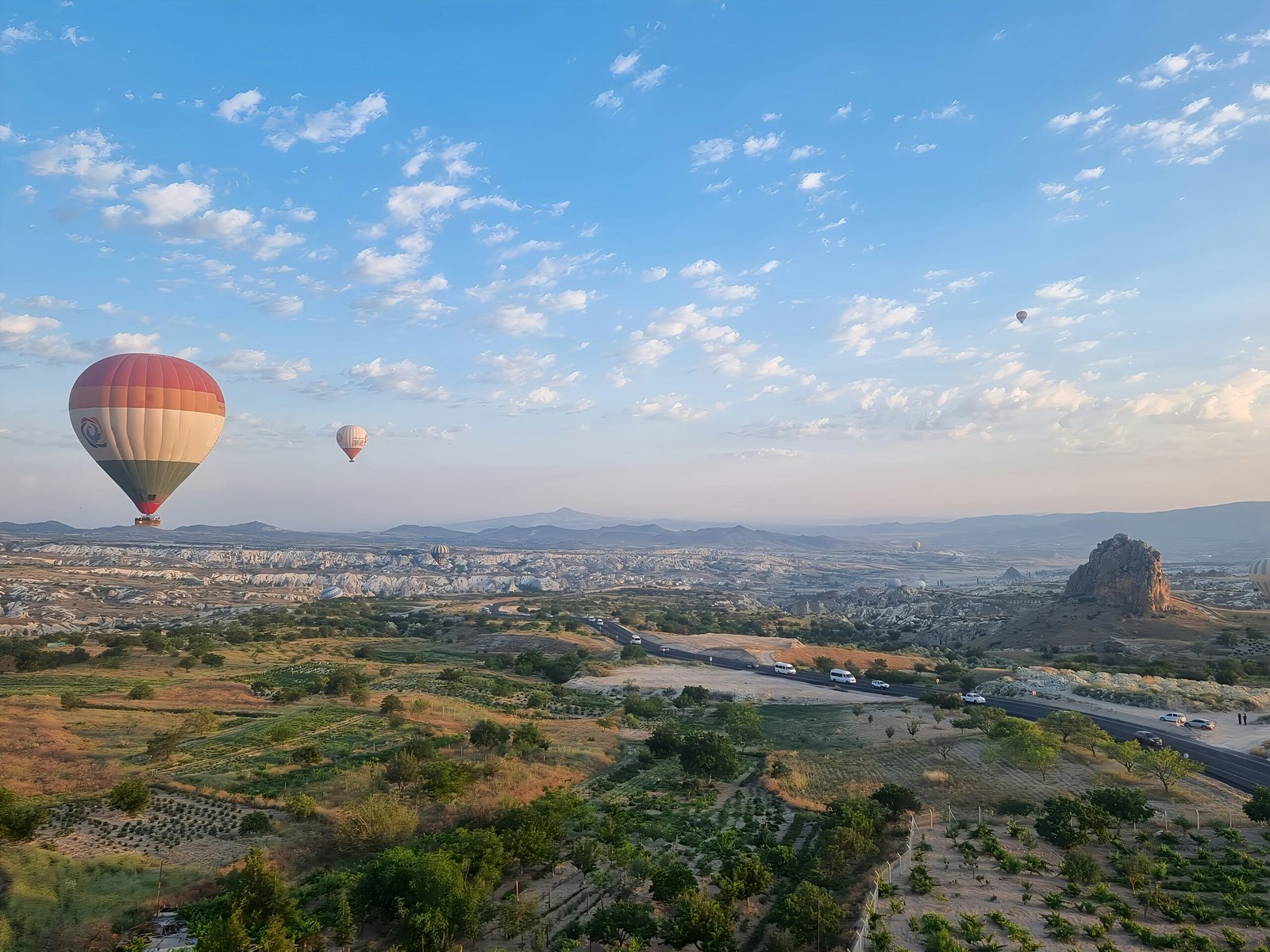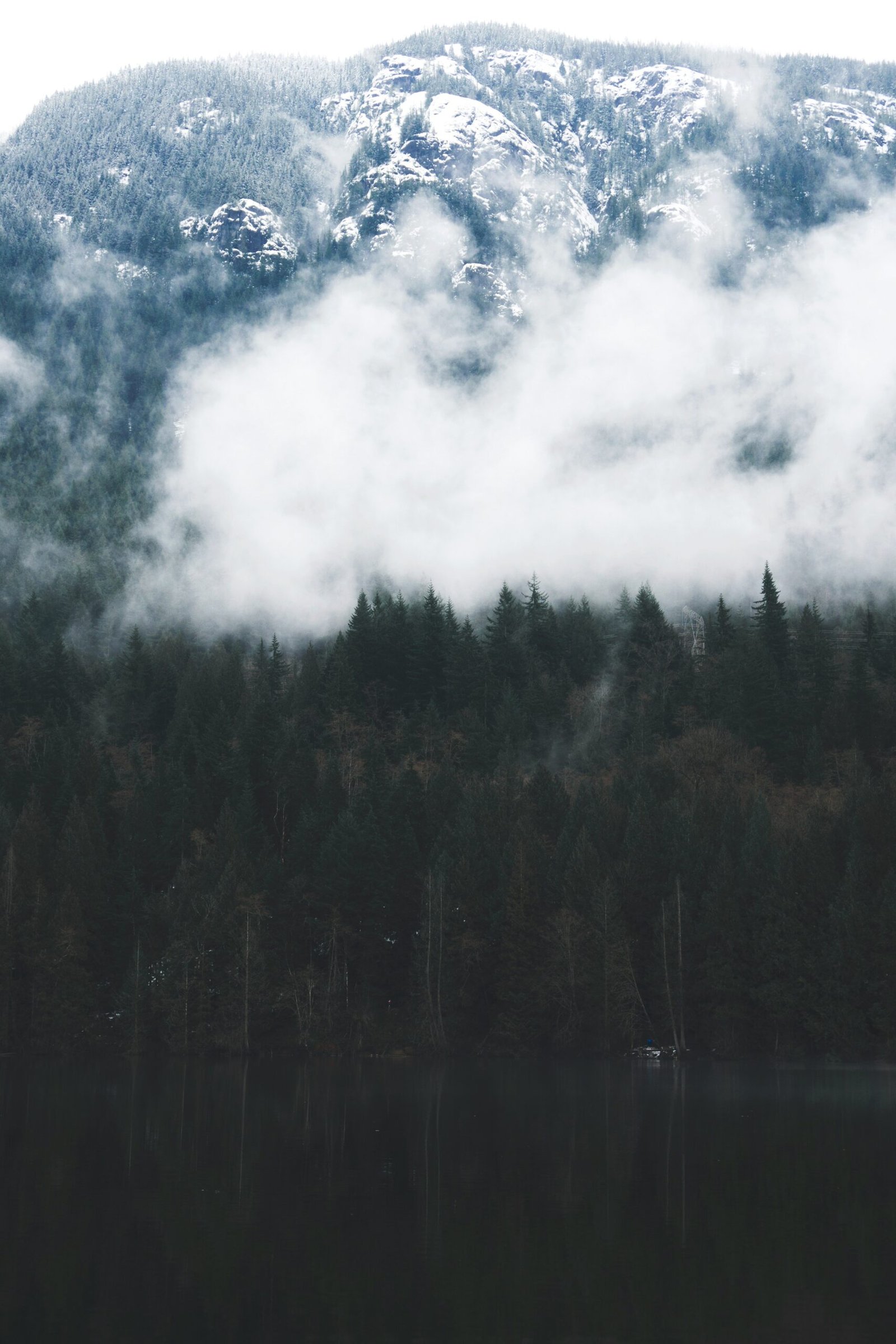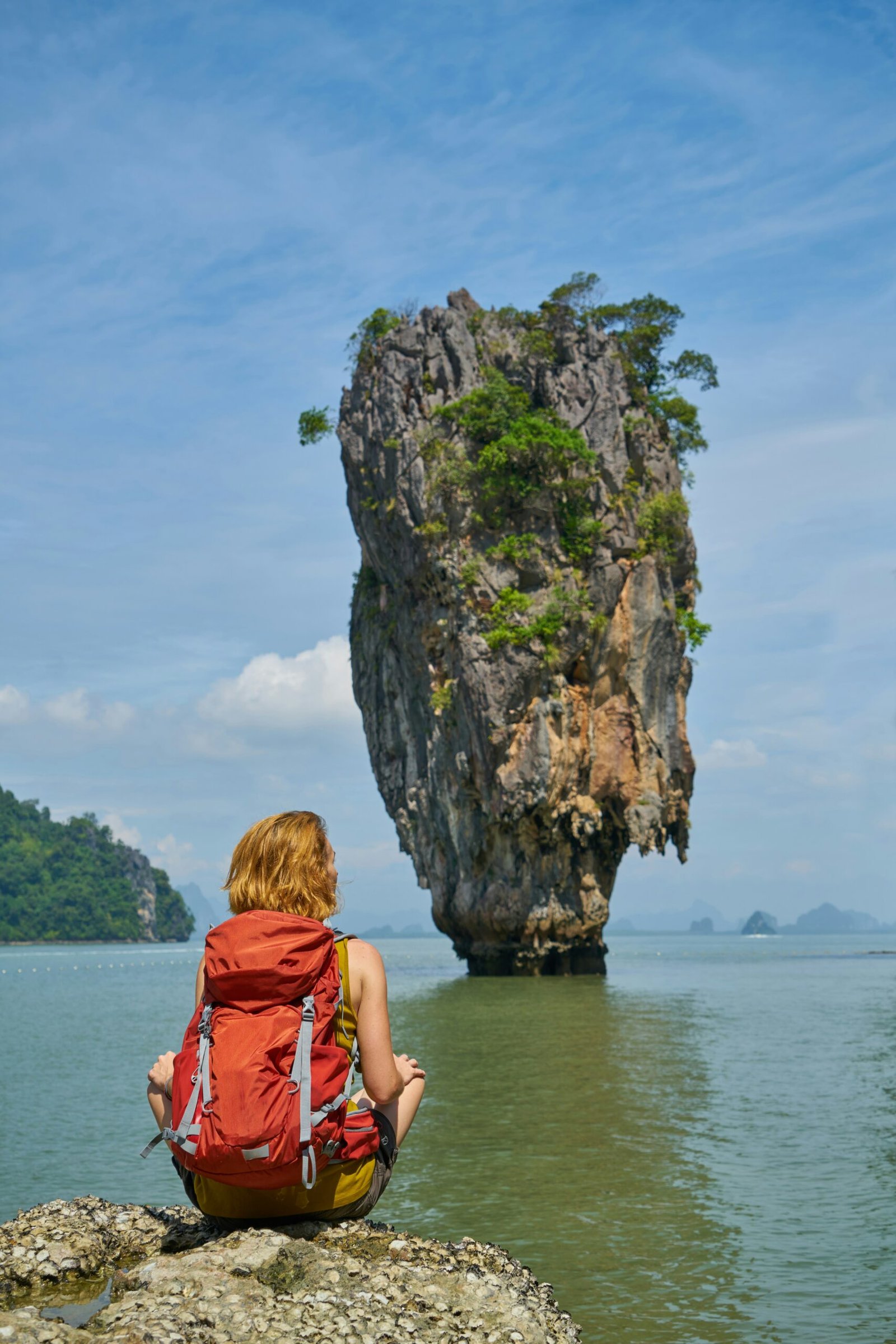

Introduction to the Zen of Travel
In our increasingly fast-paced and hyper-connected world, the pursuit of inner peace and tranquility has become a priority for many. The demands of modern life often lead to heightened stress and distractions, leaving individuals seeking respite from their everyday routines. Herein lies the concept of the Zen of Travel—a mindful approach to journeying that emphasizes finding serenity and balance through exploration, particularly in remote destinations.
Traveling to secluded locations offers a unique opportunity to disconnect from digital noise and reconnect with oneself. By immersing in nature and experiencing the simplicity of life away from urban chaos, one can find profound calming effects on the mind and body. These serene environments provide a backdrop for meditation, reflection, and personal growth, aiding travelers in achieving a state of Zen—a harmonious, peaceful, and balanced existence.
The benefits of seeking out these tranquil havens are myriad. On a physical level, the fresh air, scenic landscapes, and reduced pollution found in remote areas contribute to overall well-being. Mentally, the slower pace of life encourages mindfulness and reduces anxiety, allowing individuals to be present in the moment and appreciate the small wonders around them. Spiritually, the solitude and quietude afford a deeper introspective experience, fostering a sense of connection with one’s inner self and the surroundings.
The Zen of Travel advocates for intentionality in our journeys. It is not simply about the destination, but also the journey itself, and the awareness it brings. Through mindful travel, we can cultivate inner peace that transcends the confines of our travels, enriching our daily lives and interactions. By choosing to explore remote destinations, we embrace the powerful antidote that travel offers against the incessant pressures of modern life, rejuvenating our mind, body, and spirit.
The Transformative Power of Solitude
Solitude, often misconstrued as loneliness, holds immense transformative potential for personal growth and mental clarity. In an age characterized by incessant connectivity and digital distractions, remote destinations emerge as sanctuaries for those yearning to disconnect and embark on an introspective journey. When one retreats to these isolated havens, the absence of societal pressures and technology facilitates a profound connection with oneself.
The allure of remote locales lies not merely in their geographic seclusion but in the unique opportunity they offer for individuals to engage in deep self-reflection. Places like the serene mountains of Bhutan or the vast expanses of the Sahara Desert compel one to confront their inner thoughts and emotions, unshackled by the overwhelming stimuli of modern life. In these tranquil environments, one can attain a heightened state of mindfulness, leading to moments of clarity and profound personal insights.
Solitude in such serene settings fosters an environment where individuals can reevaluate their life goals, examine their personal values, and address unresolved internal conflicts. This introspective process can reveal previously obscured aspects of one’s character, promoting a deeper understanding of oneself. For instance, a solo trek through the secluded trails of the Appalachian Mountains has enabled countless individuals to discover resilience and perseverance they never knew they possessed.
Furthermore, remote destinations often evoke a sense of wonder and humility, as one stands in the grandeur of untouched nature. This sense of awe can lead to spiritual awakenings and a renewed appreciation for life’s simple pleasures. The stillness of these places allows one to listen to their inner voice, fostering self-compassion and a balanced mental state.
In essence, the power of solitude lies in its ability to strip away the extraneous, laying bare the essence of one’s being. Remote destinations, by virtue of their isolation, provide the ideal backdrop for this transformative experience, guiding individuals towards a path of inner peace and self-discovery.
Choosing the Right Remote Destination
When embarking on a quest for inner peace, selecting the right remote destination is paramount. Various types of locations, each with unique advantages, cater to different aspects of personal journeys towards tranquility and self-discovery. Understanding these environments can aid in aligning the choice with individual preferences and needs.
Mountains, with their lofty peaks and serene valleys, offer a sense of elevation and solitude, making them ideal for reflection and meditation. The crisp air and panoramic views provide a breathtaking backdrop for those seeking clarity and a break from the hustle and bustle of daily life. However, accessibility can be a challenge, requiring consideration of travel arrangements and the physical demands of the terrain.
Deserts, characterized by vast open spaces and profound silence, are perfect for those craving isolation and introspection. The stark, minimalist beauty of deserts can foster a deep connection with oneself and nature. Safety is a significant concern in these regions; ensuring adequate supplies of food, water, and shelter is essential due to the extreme and often harsh conditions.
Forests, with their lush greenery and tranquil atmosphere, provide an enveloping sense of calm and rejuvenation. The natural sounds and sights can be profoundly healing, allowing for a restorative experience. When planning a visit to remote forests, it’s important to research accessibility to ensure a smooth journey. Additionally, understanding the local wildlife and climate can help in preparing appropriately for a safe trip.
Islands, isolated by surrounding waters, offer an escape from the distractions of modern life. The soothing sound of waves and the pristine environment can be conducive to achieving a state of peace. Considerations for islands include how reachable they are by boat or plane, as well as the availability of basic amenities. Ensuring that the island has access to necessary resources like food, freshwater, and medical facilities can enhance the experience.
Ultimately, prioritizing accessibility, safety, and the availability of necessary amenities helps in making an informed decision. Understanding the unique advantages of each type of remote destination can greatly contribute to finding the perfect setting for inner peace and tranquility.
Embracing Minimalism in Travel
In the modern era of travel, immense value can be found in adopting a minimalist approach. Minimalist travel, characterized by packing light and carrying only the essentials, fosters a sense of peace and tranquility for the traveler. This practice reduces both physical and mental clutter, paving the way for a serene and more zen-like experience.
The philosophy of minimalism in travel hinges on the belief that fewer possessions enable a more immersive and mindful journey. By focusing solely on the essentials, travelers can become more attuned to their surroundings and experiences, rather than being distracted by the excess of material belongings. This simplicity transforms the way one interacts with new environments, cultivating a deeper connection with the destinations visited.
Adopting a minimalist approach necessitates meticulous planning and intentionality. Prioritizing versatile clothing items, multi-use gadgets, and essential toiletries ensures a streamlined packing process. The benefits of this practice extend beyond mere convenience; lighter luggage alleviates physical strain, making it easier to traverse remote or rugged terrains, ultimately fostering a sense of liberation and ease.
The act of traveling light also fosters mental clarity. Shedding the dependency on numerous items diminishes anxiety related to safeguarding belongings and reduces the potential for distractions. This mental unburdening allows travelers to engage more fully with the journey itself, appreciating the subtleties of different cultures, landscapes, and experiences.
Furthermore, minimalism encourages a shift in perspective concerning what is truly valuable. By divesting from material excess, travelers learn to find joy and contentment in experiences, connections, and personal growth. This mindful approach not only enhances the travel experience but also often extends into daily life, promoting a more intentional and fulfilling existence.
In conclusion, embracing minimalism in travel offers multifaceted benefits that align perfectly with the pursuit of inner peace. By reducing physical and mental clutter, travelers are better positioned to immerse themselves fully in the richness of their journeys, discovering zen-like serenity in simplicity.
Mindfulness Practices in Nature
Traveling to remote destinations offers an unparalleled opportunity to practice mindfulness in its purest form. Immersed in nature, far from the distractions of modern life, one can find immense benefits in incorporating various mindfulness and meditation techniques. These practices, such as hiking, forest bathing, yoga, and meditation, help enhance one’s sense of peace and presence while connecting deeply with the natural world.
Hiking is a straightforward yet effective mindfulness practice. As you traverse trails, focus on the rhythm of your footsteps, the sound of leaves crunching underfoot, and the feel of the earth beneath your feet. Such deliberate attention can anchor you to the present, allowing you to shrug off stress and become attuned to the subtleties around you. Furthermore, the physical act of hiking stimulates endorphin release, boosting mood and overall wellbeing.
Forest bathing, or “shinrin-yoku,” is another powerful practice. Hailing from Japan, this technique involves taking slow, deliberate walks in woodland settings, intentionally engaging all your senses. The act of breathing in the forest’s natural aroma, listening to the rustling leaves, and observing the myriad shades of green fosters a calming, therapeutic effect. Studies have shown that forest bathing can reduce cortisol levels, lower blood pressure, and enhance immune function.
Yoga, practiced in nature, can significantly deepen your connection to the environment. Simple asanas (postures) done on a beach, hilltop, or forest clearing allow you to experience the natural elements firsthand. The gentle sway of trees, the whisper of the wind, and the warmth of the sun can enhance the sensory experience, making every yoga practice a mindful meditation.
Meditation, regardless of its form, benefits significantly from a nature setting. Whether you practice seated, walking, or guided meditation, the serene surroundings can effortlessly amplify your focus and tranquility. Nature sounds, such as birdsong or flowing water, can serve as focal points, fostering a meditative state. Additionally, the physical isolation of remote destinations often means fewer interruptions, allowing for deeper immersion in the practice.
Integrating these mindfulness practices into daily routines while traveling demands a balance of intention and flexibility. Begin by setting aside a few moments each day to consciously engage in one of these activities. Mornings are ideal for short meditation or yoga sessions, allowing you to start the day with clarity and calm. Midday, a mindful hike or forest bath can rejuvenate your spirit, whereas evenings can be reserved for reflective practices, such as journaling about your experiences.
Incorporating mindfulness into your travels not only enhances your immediate experience but also equips you with practices that can bolster your mental health long after your journey ends. Finding inner peace in remote destinations is not merely an aspiration but a tangible outcome of embracing these mindful practices in nature.
Cultural Immersion and Respect
Immersing oneself in the local culture is an integral part of achieving the Zen of travel. Engaging deeply and respectfully with local traditions and customs not only enriches your personal travel experience but also fosters a sense of global interconnectedness and empathy. Through mindful cultural interactions, travelers have the opportunity to appreciate the diverse ways of life that this world offers.
Cultural immersion begins with a genuine interest in understanding the local community. One can achieve this by learning basic phrases in the local language, participating in traditional ceremonies, and tasting authentic cuisine. Such authentic engagement can lead to meaningful and memorable experiences, bridging gaps between different cultures and forming lasting connections.
However, it is crucial to approach cultural immersion with respect and mindfulness. Avoid reducing cultural practices to mere spectacles for entertainment. Always seek permission before taking photographs of individuals or their property, as some cultures may find this intrusive. Learning about local customs and social norms in advance can help prevent unintentional disrespect.
Showing respect also extends to aware consumption of local resources and supporting the community economically. Purchasing from local artisans, staying in locally-owned accommodations, and consuming responsibly can have a positive impact on the local economy and environment. By understanding and respecting the local ways, travelers contribute positively to the preservation and appreciation of cultural heritage.
Ultimately, cultural immersion and respect create a harmonious travel experience that benefits both the traveler and the host community. When travelers approach local cultures with an open heart and mind, they navigate their journey with wisdom and empathy, contributing to a more interconnected and understanding world.
Documenting the Journey
Documenting a travel journey, whether through a journal or photographs, offers profound benefits that transcend mere memory preservation. It allows travelers to capture the essence of their experiences and reflect on their personal growth throughout the trip. By taking the time to document moments of tranquility and insight, travelers can create a tangible means of revisiting and reliving the zen they encountered in remote destinations.
Keeping a travel journal serves as a powerful tool for reflection. Writing about daily experiences, meetings with locals, and personal thoughts provides a unique opportunity to process and internalize the trip’s impact. Travelers who chronicle their journeys in a journal often find that this practice helps them develop a deeper appreciation for each moment, fostering an enhanced sense of mindfulness. Effective journaling can be achieved by setting aside a few minutes each day to write, focusing on sensory details and emotional responses, thus creating a rich tapestry of memories.
In addition to journaling, capturing photographs is a popular way to document travel experiences. Mindful photography goes beyond snapping quick pictures; it involves being present in the moment, paying attention to the environment, and purposefully selecting subjects that represent the journey’s essence. When travelers approach photography with mindfulness, their images reflect the tranquility and insight they discovered. Tips for mindful photography include taking time to frame each shot thoughtfully, being patient for the right lighting and moment, and experimenting with different perspectives to capture the true spirit of a location.
Both journaling and mindful photography provide avenues for travelers to archive their experiences, offering a tangible way to revisit their journeys. These methods not only enhance personal growth but also contribute to a lasting sense of inner peace. The practice of documenting the journey, through words or images, transforms travel into a deeply reflective activity, ensuring that the zen found in remote destinations continues to resonate long after the trip has concluded.
Returning to Reality: Integrating Peaceful Practices at Home
Upon returning home from a peaceful and transformative journey to a remote destination, the challenge often lies in maintaining the sense of inner peace and zen acquired during travel. Integrating tranquil practices into everyday life can help sustain these benefits long-term. One effective approach is to establish a regular meditation routine. Dedicating just a few minutes each day to meditate can center the mind and foster a sense of calm amidst daily chaos.
Mindfulness, the practice of being fully present in the moment, can also be seamlessly incorporated into daily routines. Simple actions, such as mindful eating or taking a moment to appreciate nature during a walk, can ground you and reinforce the serenity experienced during travel. Practicing mindfulness helps in reducing stress and enhancing overall well-being.
Embracing minimalism is another powerful strategy. By decluttering your living space, you create an environment that is conducive to relaxation and mental clarity. Often, the process of letting go of unnecessary possessions mirrors the internal process of finding peace. A minimalistic lifestyle also encourages intentional living and prioritizing what truly matters.
Periodic retreats, even if they’re just weekend getaways or day trips, can rejuvenate your spirit. These retreats do not need to be extravagant; the goal is to disconnect from the usual environment and reconnect with yourself. Regular mini-retreats help in re-centering and maintaining a balanced state of mind.
Finally, creating a tranquil living environment is key. Invest in elements that promote relaxation, such as soft lighting, calming scents, and natural decor. Designate a specific area in your home for relaxation or meditation. This sacred space can act as a daily refuge, helping you to easily slip back into the peaceful state reminiscent of your travels.




